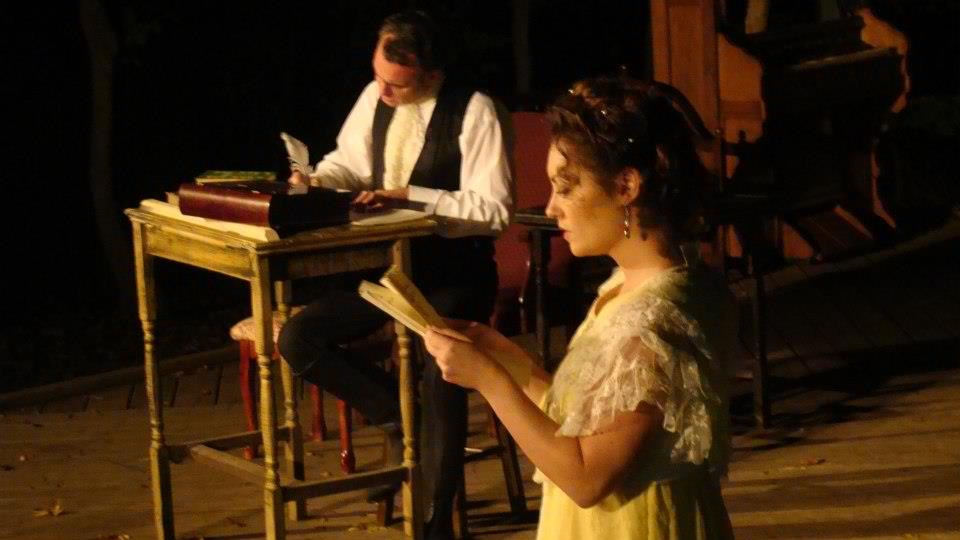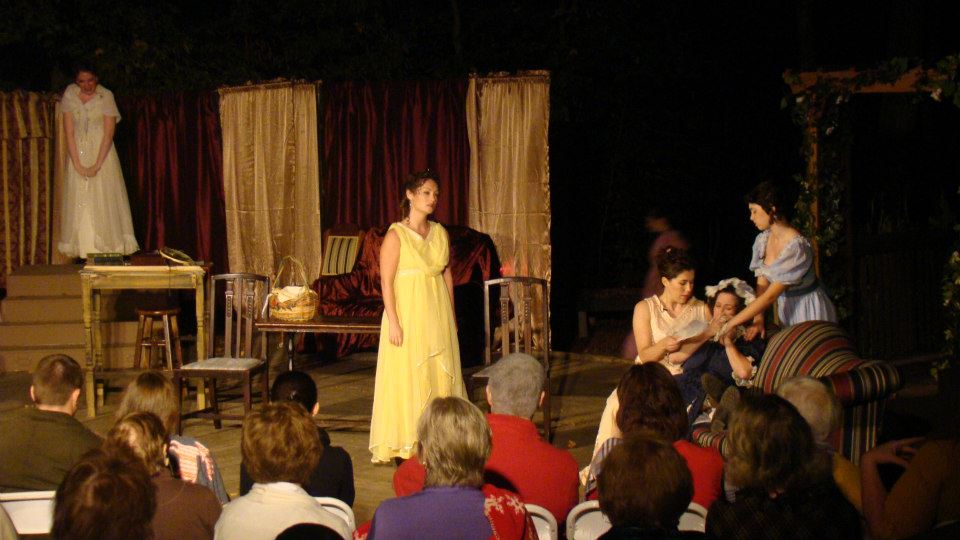 Chapin Theatre Company presents an outstanding production of Into the Woods with music and lyrics by Stephen Sondheim and book by James Lapine at the Harbison Theatre at Midlands Technical College. The musical debuted in 1986 at the Old Globe Theatre in San Diego, followed by a Tony Award-winning Broadway production in 1987. Numerous other versions of Into the Woods have emerged over the years, including Broadway and London revivals as well as the 2014 film adaptation. (This reviewer first fell in love with the musical through the PBS American Playhouse filming of the original stage production. Into the Woods became the first of many musicals I would direct with high school students, and I have fond memories of problem-solving its trickier production demands with energized and optimistic teenagers.) The Chapin Theatre Company succeeds in producing a musical with considerable history through an innovative and fresh approach.
Chapin Theatre Company presents an outstanding production of Into the Woods with music and lyrics by Stephen Sondheim and book by James Lapine at the Harbison Theatre at Midlands Technical College. The musical debuted in 1986 at the Old Globe Theatre in San Diego, followed by a Tony Award-winning Broadway production in 1987. Numerous other versions of Into the Woods have emerged over the years, including Broadway and London revivals as well as the 2014 film adaptation. (This reviewer first fell in love with the musical through the PBS American Playhouse filming of the original stage production. Into the Woods became the first of many musicals I would direct with high school students, and I have fond memories of problem-solving its trickier production demands with energized and optimistic teenagers.) The Chapin Theatre Company succeeds in producing a musical with considerable history through an innovative and fresh approach.
Into the Woods weaves together familiar fairy tales in clever and surprising ways. Key characters are drawn into the woods in pursuit of their dreams and desires: the Baker and his wife seek items needed to lift the Witch’s magic spell and cure their childlessness; Cinderella travels to her mother’s grave for advice on how to attend the prince’s ball; Jack (of eventual beanstalk fame) must sell his beloved cow Milky White in a desperate effort to alleviate his family’s poverty; and Little Red Riding Hood sets out for her grandmother’s house, only to be waylaid by the Wolf. While Act One traces the journey towards wish fulfillment, Act Two takes a darker turn as the characters face what happens after “happily ever after.” As Cinderella sings to a heartbroken Little Red Riding Hood: “Sometimes people leave you, halfway through the wood. Others may deceive you. You decide what’s good.” Recognition of human imperfection and finding hope amid bleak circumstances provide thematic cornerstones that are as timely now as ever.
Into the Woods has been challenging and moving audiences for decades, and astute director Jamie Carr-Harrington has assembled a top-notch cast for this excellent production. In the central role of the Baker, Clayton King provides vocal power and emotional connection through pivotal numbers such as “No More,” a poignant sequence with the Mysterious Man (aptly played by Andy Nyland, who is also the appealing Narrator.) Becca Kelly (Baker’s Wife) and Karly Minacapelli (Cinderella) create engaging characters while sharing gorgeous vocal talents.
Catherine L. Bailey triumphs in the complex role of the Witch, communicating both strength and frailty in songs such as “Last Midnight” which is performed as a beguiling lullaby that transforms into a ferocious display of power. Jackie Rowe plays Little Red with depth and compassion, making a role that could easily become a caricature into a highly moving depiction of growing up. After admiring his work on various Columbia stages for years, this reviewer was thrilled to open the program and see Paul Lindley II cast in the role of Jack. Lindley’s vocal energy and magnetic stage presence contribute to a gratifying performance. Nancy Ann Smith delivers a delightful portrayal of Jack’s beleaguered mother.
As the “charming, not sincere” Princes, Jeremy Reasoner and Kyle Neal have impeccable timing and admirable voices, especially in the crowd-pleasing number “Agony.” Ann Baggett (Stepmother), Rachel Glowacki (Lucinda), and Elizabeth Stepp (Florinda) depict Cinderella’s step-family with comedic glee, while Courtney Reasoner shares a beautiful soprano in the role of Rapunzel. Parker Byun succeeds as an appropriately sleazy Wolf and doubles in the role of Cinderella’s incompetent father. Ruth Glowacki’s fierce Granny and Giant and Joshua Wall’s sarcastic Steward contribute to the strong performance.
With superb musical direction by Christopher A. McCroskey, the cast demonstrates extraordinary vocal ability throughout the production. A first-rate group of musicians fulfill the intricate challenges of Sondheim’s score, including David Branham (Bass), Brian Lamkin (Trumpet), and Samantha Marshall (Flute). Patty Boggs’ precise work with percussion enhances the production significantly.
A substantial production staff has collaborated to bring Into the Woods to life, including Carr-Harrington, Lou Clyde (Producer), Carrie Chalfont (Stage Manager), Matt Pound (Technical Director; Set and Lighting Design), Shelby Sessler (Costumer), Kara Pound (Art Design), Diane Moore (Properties) and J.S. Lee (Sound Design and Technician). The technical demands of Into the Woods are considerable, and the production team showcases creativity and skill in staging this performance.
With Carr-Harrington’s expert guidance, the Chapin Theatre Company scores a major win with Into the Woods. For viewers who think they have already seen this material because they went to the movie version: you really don’t want to miss the opportunity to enjoy this lovely production of a musical treasure by a successful local theatre company in the wonderful Harbison Theatre facility. As the characters sing in the opening prologue, “Into the woods, it’s time to go!”
Into the Woods will be presented by the Chapin Theatre Company at the Harbison Theatre at Midlands Technical College on June 24, 25, 26, and 27 at 8 pm and on June 28 at 3 pm. The theatre is located at 7300 College Street in Irmo, SC. For more information, visit www.chapintheatre.org.






